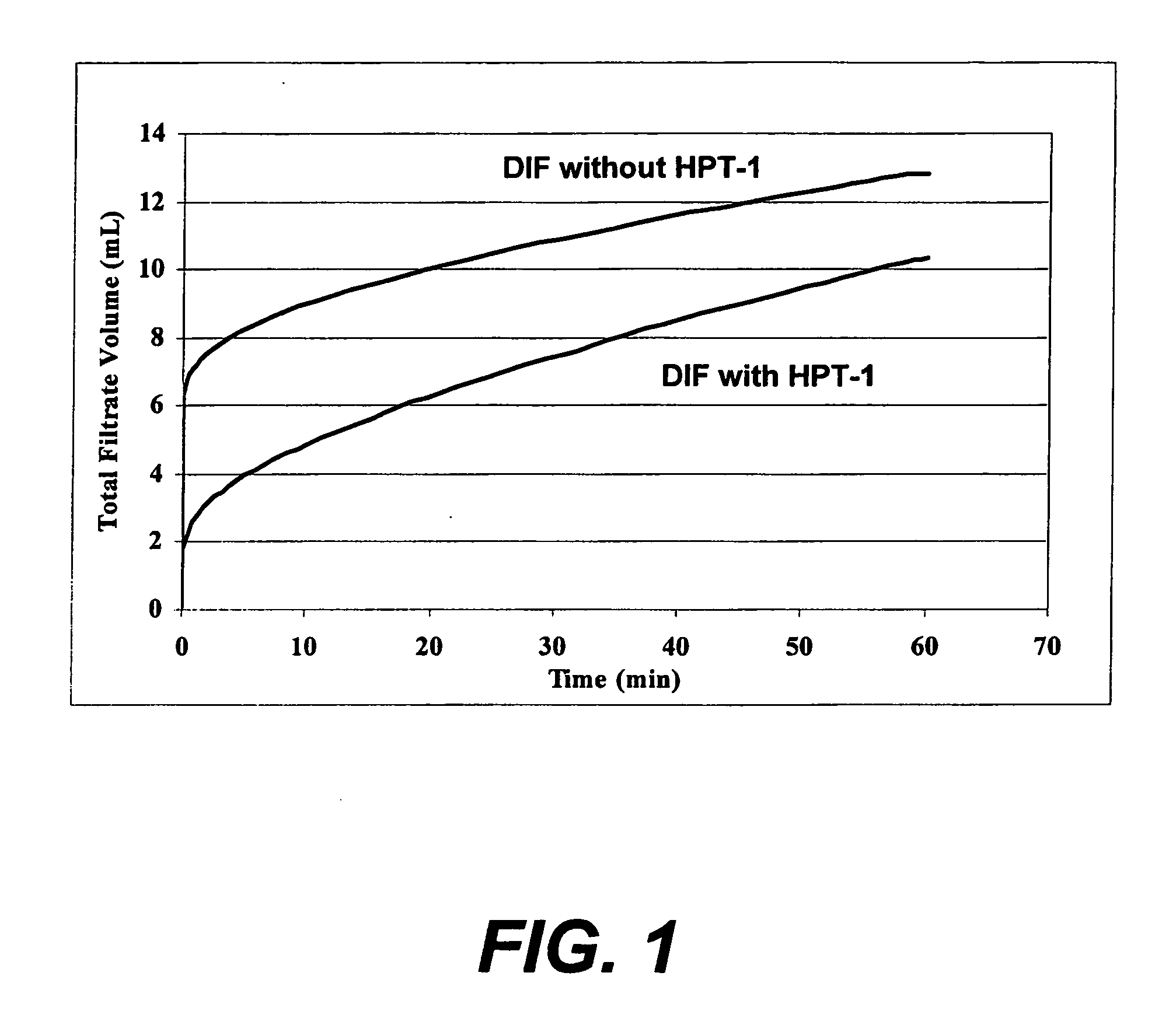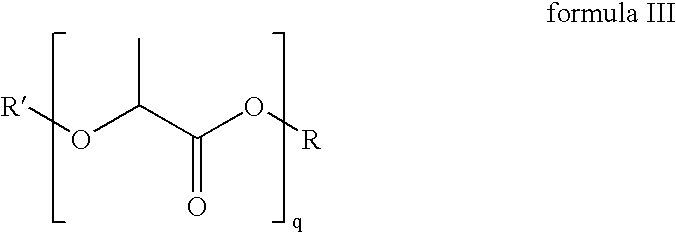Drill-in fluids and associated methods
a technology of fluid loss control and drill-in fluid, which is applied in the direction of sealing/packing, chemistry apparatus and processes, and wellbore/well accessories. it can solve the problems of difficult selective treatment or remedial operations within the reservoir section, difficult degrading of the filter cake, and unsupported sandfa
- Summary
- Abstract
- Description
- Claims
- Application Information
AI Technical Summary
Benefits of technology
Problems solved by technology
Method used
Image
Examples
examples
[0060]The drill-in fluids were made using a standard mud mixing and conditioning procedures. Tables 1 and list the components for each sample. “N-Vis” is a xanthan, and is available from Halliburton Energy Services, Duncan, Okla. “N-Dril HT Plus” is a starch, and is available from Halliburton Energy Services, Duncan, Okla. “Baracarb-50” is a calcium carbonate based bridging agent, and is available from Halliburton Energy Services, Duncan, Okla. “Baracarb-5” is a calcium carbonate bridging agent bridging agent, and is available from Halliburton Energy Services, Duncan, Okla. “HIPT-1” is a relative permeability modifier fluid loss control additive, and is available from Halliburton Energy Services, Duncan, Okla. The water, salt, xanthan, and starch were mixed on a Hamilton-Beach blender at high speed for 20 minutes. The remaining ingredients were added at low speed and mixed for an additional five minutes. The mud samples were placed in sealed jars, and then in a 65° C. roller oven fo...
PUM
| Property | Measurement | Unit |
|---|---|---|
| pH | aaaaa | aaaaa |
| temperatures | aaaaa | aaaaa |
| particle size distribution | aaaaa | aaaaa |
Abstract
Description
Claims
Application Information
 Login to View More
Login to View More - R&D
- Intellectual Property
- Life Sciences
- Materials
- Tech Scout
- Unparalleled Data Quality
- Higher Quality Content
- 60% Fewer Hallucinations
Browse by: Latest US Patents, China's latest patents, Technical Efficacy Thesaurus, Application Domain, Technology Topic, Popular Technical Reports.
© 2025 PatSnap. All rights reserved.Legal|Privacy policy|Modern Slavery Act Transparency Statement|Sitemap|About US| Contact US: help@patsnap.com


